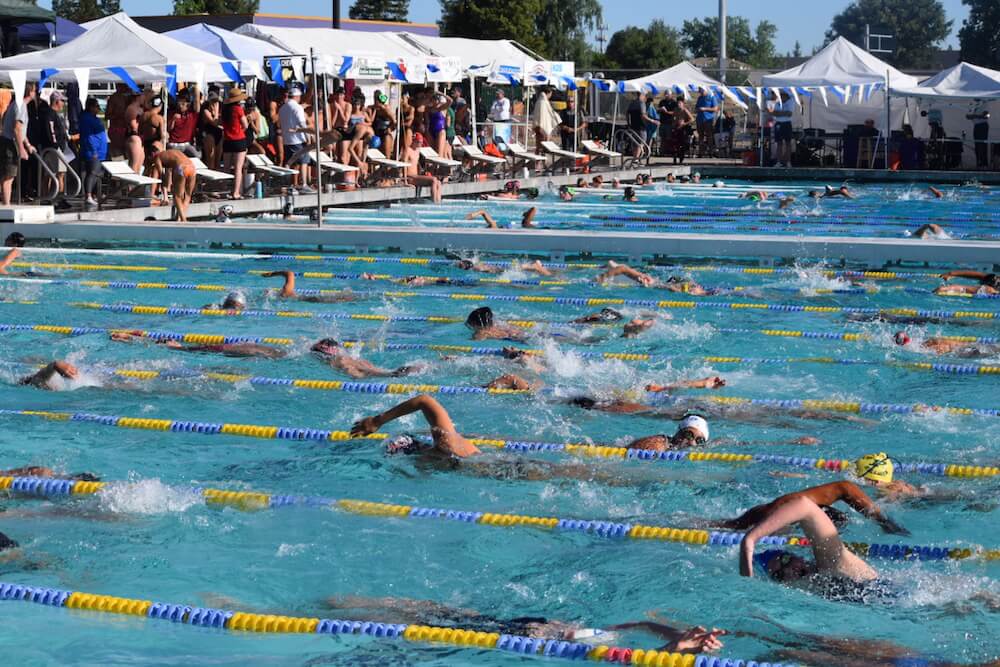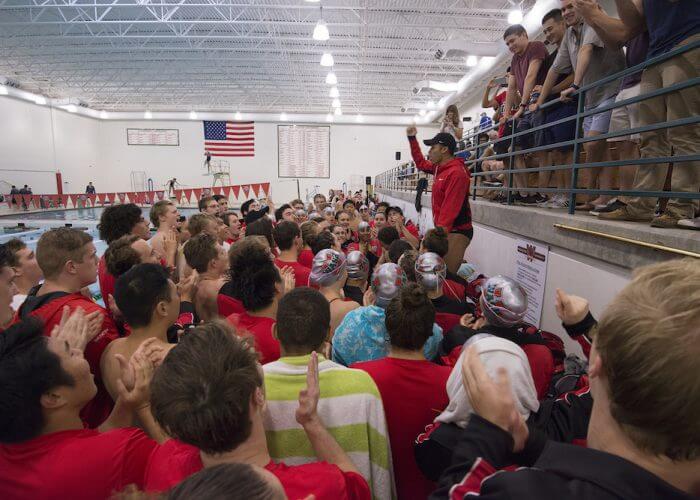How to Navigate 5 Uncontrollable Environmental Factors at Swim Meets

Navigating 5 Uncontrollable Environmental Factors at Swim Meets
Every swim meet offers something to be excited about, whether that means you are eager to race, spend time with your teammates or travel to a new place. Despite all of the fun and exciting things that swim meets offer, there are sometimes uncontrollable environmental factors that aren’t always ideal. Read along to learn about the not-so-great environmental issues that may arise at swim meets – and how to navigate these untimely scenarios.
Air Quality
Some pools have poor air quality, causing swimmers to experience tightness in their chest, coughing spells or wheezing. Problems with the air quality tend to happen when the chlorine levels are too high, and the airflow system is weak. Not being able to breathe well at a meet is one of the most frustrating things that can happen to you. Often, swimmers will start to worry more about how they are going to perform when they are concerned about their breathing issues. Overall, bad air quality makes it hard for swimmers to stay confident and focused on the races that they have in front of them.
If you are struggling to breathe, step out of the pool area where the chlorine is not as strong so that you can inhale clean air. If you are prescribed an inhaler, it would be a smart choice to use it in an environment like this.
No Warmup/Cool Down Pool
I am sure we have all been to a swim meet that doesn’t have a separate pool to warm up or cool down. Especially for older swimmers who are at the high school or college level, it is extremely important to do a proper warmup before a race, as well as enough cool down afterward. Unfortunately, a separate pool is not always accessible for swimmers to use at swim meets.
If this ever happens to you, it is best to incorporate more of a dry warmup that includes plenty of dynamic exercises to get your body moving and your heart rate up. In order to cool down after a race, it is important to find ways to lower your heart rate. Whether that means you have to take a few laps walking around the pool deck or get in the competition pool to swim easy during meet breaks, it is crucial to release the lactic acid built up from a race.
Crowded Pool/Pool Deck

Photo Courtesy: Danny Reise
Most swimmers’ biggest pet peeve is swimming in a crowded lane during meet warmup. Nobody likes getting run over or pushed around when they are trying to prepare for a race. Outside of the water, the pool deck is not much better. At bigger meets, there might be several teams with multiple athletes. This causes the pool deck to get congested very quickly. It is not always ideal swimming or walking around when it is crowded, but sometimes we have to maneuver the best we can.
A simple solution to avoiding the crowd when warming up would be to get in the pool at an earlier or later time when it isn’t as busy.
Bench Space
A challenge for many teams at swim meets is finding somewhere to sit. This isn’t something that people tend to think of as being an issue, but sometimes it is very difficult. Often, teams have to share benches with other teams, making it even more crowded. Between all the athletes sharing the bench, and the several bags taking up space, too, sometimes swimmers are left with little to no space to sit before their races.
Condensing all of your things into one bag and placing it by your feet or under the bench could help open up more space on the benches for athletes to sit.
Pool Deck Temperature
Most pool decks are typically pretty warm – to most people. On the other hand, swimmers tend to feel cold on deck, especially at swim meets. When swimmers sit around in their wet bathing suits for a long period of time, their muscles will start to tense up, which is not a positive development before a race.
Staying warm during a swim meet is crucial for success. Wearing your warmups, socks and shoes, and always having a towel on hand will help keep swimmers’ muscles loose and warm so that they are ready to go when it comes time to race.
There are many uncontrollable factors when swimmers enter a new competition environment. Being aware that every pool is different and knowing that you may need to adapt on the spot are important traits to have. What are some other uncontrollable environmental factors that you might experience on the pool deck? Comment down below!




The chlorine smell in a pool is chloramines, the byproduct of chlorine reacting to organics the pool. Usually means the pool is dirty.